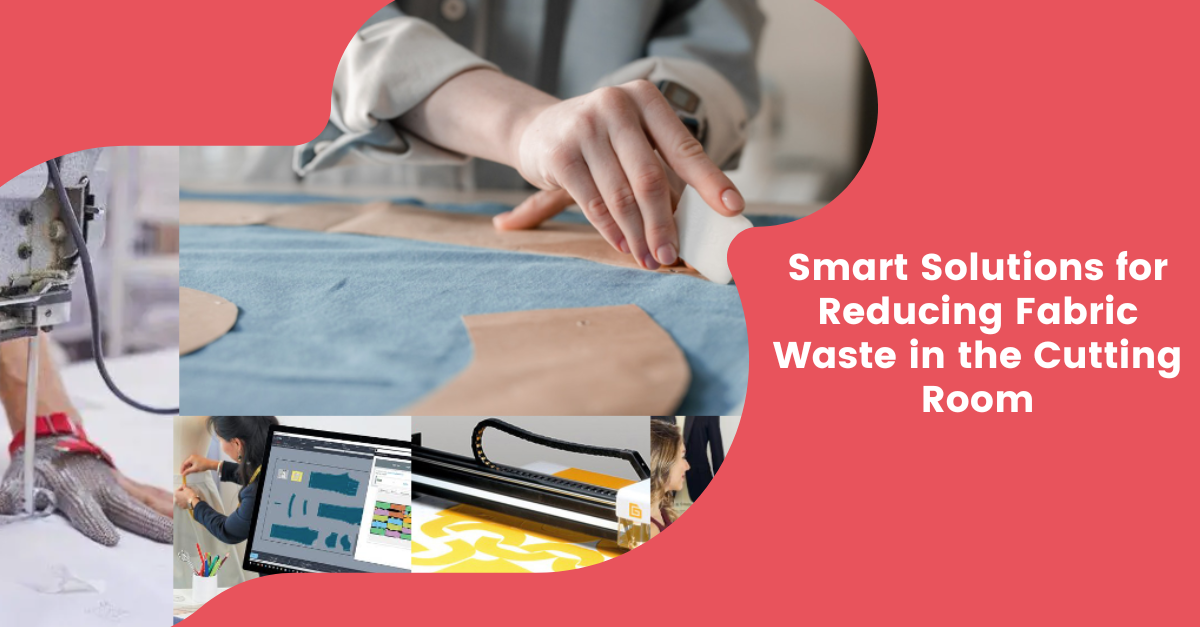Introduction
In today’s fast-paced fashion industry, reducing waste and improving efficiency are key challenges that manufacturers face. The cutting room, where fabric is transformed into garment pieces, plays a crucial role in this process. By implementing smart solutions, manufacturers can significantly reduce fabric waste, optimize production processes, and contribute to a more sustainable future. In this article, we will explore innovative techniques and technologies that can unlock efficiency in the cutting room, leading to minimized fabric waste and improved productivity.
Analyzing and Optimizing Pattern Placement
Pattern placement is a critical step in the cutting process. By strategically arranging patterns on the fabric, manufacturers can minimize waste and maximize the number of garment pieces obtained. Advanced software and algorithms can assist in analyzing patterns and generating optimized cutting layouts. These tools take into account various factors, such as fabric type, pattern size, and grain direction, to ensure the most efficient use of materials.
Implementing Computerized Cutting Systems
Manual cutting processes can be time-consuming and prone to errors. Computerized cutting systems, such as automated fabric cutters and laser cutters, offer significant advantages in terms of accuracy, speed, and waste reduction. These systems use precise measurements and cutting paths to minimize fabric waste while improving cutting efficiency. Additionally, they can handle intricate designs and complex patterns with ease, ensuring consistent quality throughout the production process.
Utilizing Nesting Software for Optimal Fabric Yield
Nesting software is another valuable tool in the quest for reduced fabric waste. This software analyzes pattern shapes and automatically arranges them in the most space-efficient manner, maximizing fabric yield. By minimizing gaps between patterns and utilizing every inch of fabric, manufacturers can achieve substantial waste reduction and cost savings. Nesting software can be integrated with cutting machines to streamline the entire cutting process.
Adopting Lean Manufacturing Principles
Lean manufacturing principles focus on eliminating waste and improving overall efficiency. Applying these principles to the cutting room involves identifying and eliminating non-value-added activities, optimizing workflow, and reducing unnecessary steps. By streamlining processes, manufacturers can reduce fabric waste, minimize downtime, and improve productivity. This approach also promotes a culture of continuous improvement, where employees actively contribute to finding innovative solutions for waste reduction.
Embracing Sustainable Fabrics and Techniques
Choosing sustainable fabrics and production techniques is essential in reducing fabric waste. Eco-friendly materials, such as organic cotton, recycled polyester, and hemp, can help minimize the environmental impact of the fashion industry. Additionally, techniques like zero-waste pattern cutting and fabric reclamation can be implemented to make the most of the available resources. By prioritizing sustainability, manufacturers can attract environmentally conscious consumers and position themselves as leaders in the industry.
Investing in Training and Education
Proper training and education of cutting room personnel are vital for efficient operations. Staff should be equipped with the necessary knowledge and skills to handle cutting equipment, utilize software tools, and implement waste reduction strategies effectively. Regular training sessions and workshops can help employees stay up to date with the latest technologies and industry best practices, fostering a culture of continuous learning and improvement.
Collaborating with Suppliers and Designers
Effective collaboration between manufacturers, suppliers, and designers is crucial for waste reduction in the cutting room. Suppliers can provide valuable insights on fabric utilization, offering alternatives and solutions to minimize waste. Designers, on the other hand, play a significant role in creating garment designs that optimize fabric usage. By involving all stakeholders from the early stages of product development, manufacturers can ensure a holistic approach to waste reduction.
Monitoring and Analyzing Key Performance Indicators
To measure the success of waste reduction efforts, it is essential to monitor and analyze key performance indicators (KPIs). KPIs, such as fabric utilization rate, cutting efficiency, and waste percentage, provide valuable insights into the effectiveness of implemented strategies. Regularly tracking these metrics allows manufacturers to identify areas for improvement, set benchmarks, and make data-driven decisions to optimize processes further.
Implementing Quality Control Measures
Quality control measures are vital in reducing fabric waste and ensuring the production of high-quality garments. By implementing stringent quality control protocols, manufacturers can identify and rectify issues early in the cutting process, preventing the production of faulty or unusable pieces. This not only reduces waste but also minimizes rework and improves overall production efficiency.
Embracing Continuous Improvement and Innovation
In a rapidly evolving industry, embracing continuous improvement and innovation is key to unlocking efficiency in the cutting room. Manufacturers should actively seek out new technologies, methodologies, and best practices that can further optimize processes and reduce waste. Staying informed about industry trends, attending trade shows and conferences, and fostering a culture of innovation within the organization can lead to breakthroughs and competitive advantages.
Conclusion
Efficiency and waste reduction in the cutting room are critical for sustainable and profitable manufacturing operations in the fashion industry. By implementing smart solutions and embracing technological advancements, manufacturers can significantly minimize fabric waste, improve productivity, and contribute to a more sustainable future. Analyzing and optimizing pattern placement, utilizing computerized cutting systems, adopting lean manufacturing principles, and collaborating with suppliers and designers are just a few strategies that can lead to substantial waste reduction. By prioritizing sustainability and investing in training and education, manufacturers can position themselves as leaders in the industry while appealing to environmentally conscious consumers. Monitoring KPIs, implementing quality control measures, and embracing continuous improvement and innovation are essential for maintaining and further improving efficiency in the cutting room. By implementing these strategies and staying ahead of the curve, manufacturers can unlock efficiency, reduce fabric waste, and thrive in the ever-changing landscape of the fashion industry.







